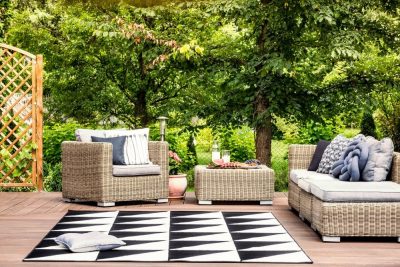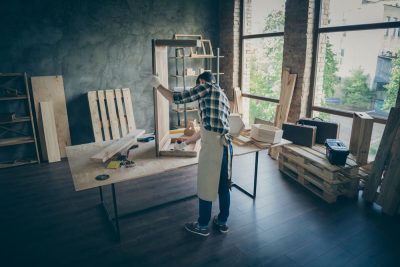
Architecture and interior design students find themselves at the cutting edge of innovation, exploring trends that shape our perception and interaction of spaces. This blog post dives into recent advancements in these fields to provide students with inspiration as they embark upon exciting projects or research endeavors. Additionally, Paperial reviews academic assistance services like its service to aid the learning journey.
Sustainable Architecture: Expanding Green Building Practice
Sustainability has emerged as a defining characteristic of contemporary architecture. Students are exploring eco-friendly design solutions beyond traditional green building practices, exploring innovative materials, energy-efficient technologies, and regenerative design principles to craft structures that coexist harmoniously with nature – from vertical gardens to solar-integrated facades. Sustainable architecture offers limitless possibilities for student projects.
Minimalism in Interior Design: Rejecting Complexity
Minimalism has emerged as a dominant trend in interior design, emphasizing simplicity, functionality, and the effective use of space. Students are drawn to its elegant interiors characterized by neutral color palettes, clean lines and multifunctional furniture – creating an ambiance of calm while challenging designers to come up with innovative solutions within a context of minimalism.
Connected Homes and IoT Integration
Smart homes are now becoming a reality, with students exploring ways to integrate Internet of Things (IoT) technologies into architectural and interior design projects. From automated lighting systems to climate control, students are pushing the envelope on what can be accomplished when it comes to making homes that respond to the needs and preferences of their inhabitants – opening up exciting avenues of student research in terms of technological development and aesthetic innovation.
Biophilic Design: Nature as a Design Element
Biophilic design seeks to bring nature inside by emphasizing its presence within built environments. This trend encourages the incorporation of natural elements like plants, natural light, and water features into architectural and interior design projects. Students have discovered how biophilic design can boost well-being, productivity, and overall experience of space, making it a fascinating avenue of study and experimentation.
Adaptive Reuse and Heritage Preservation
In today’s eco-conscious society, adaptive reuse has gained prominence within architectural circles. Students are exploring methods for revitalizing existing structures while upholding the historical and cultural significance of older structures. This trend not only contributes to sustainable design practices but also forces students to think creatively about how best to utilize existing spaces.
Art Deco Revival: Blend of Classic and Contemporary Features
Art Deco’s distinct geometric patterns and glamorous aesthetics have seen a revival in both architecture and interior design, drawing students in. Students appreciate its combination of classic elegance with contemporary elements to create spaces that pay homage to past while celebrating the future. This trend offers students a perfect canvas for projects that combine different design eras.
Virtual and Augmented Reality in Design Education IX.
Virtual and augmented reality technologies have revolutionized design education, offering students immersive experiences that transcend traditional boundaries. Architects and interior designers are turning to these immersive tools in order to visualize spaces three-dimensionally. This gives architects and interior designers greater insight into scale, proportion, spatial relationships, and other essential metrics of design education. Not only does this improve learning experiences, but it equips students with valuable digital age skills as well.
Inclusive Design: Addressing Diverse User Needs
Inclusivity has become a cornerstone of contemporary design philosophy as students explore ways to design spaces that cater to a diverse array of users while taking into account issues such as accessibility, cultural sensitivity, universal design principles, and visual aesthetics. Inclusive design challenges students to think beyond aesthetic considerations and prioritize functionality and comfort for all, regardless of physical abilities or cultural background.
3D Printing in Architecture: From Concept to Reality
3D printing technology has revolutionized how architects create their visions, with students taking full advantage of this trend to produce intricate models and functional building components using 3D printing technology. 3D prototyping allows students to test and refine their designs quickly while opening up new avenues of exploration – pushing beyond what was ever deemed achievable for architectural and interior design projects.
Biomimicry as a Design Mentor
Biomimicry draws inspiration from nature to develop sustainable design solutions to human challenges and has quickly become a favorite discipline among students to discover creative, innovative, and environmentally conscious design ideas. From replicating spider web efficiency to imitating the self-healing properties of materials – biomimicry offers endless opportunities for experimentation in architecture and interior design research and experimentation.
Social and Cultural Influences in Design
Architecture and interior design are increasingly being informed by social and cultural considerations, with students exploring ways to design spaces that represent the values, identities, narratives, and narratives of communities they serve. From including local art and craftsmanship into designs that address societal needs through design. This trend highlights cultural sensitivity’s vital role in crafting meaningful spaces that resonate with users.
Resilient Design: Responding to Varying Environmental Conditions
Faced with climate change and unpredictable environmental conditions, resilient design has grown increasingly important. Students are exploring how to build structures that can withstand natural disasters while remaining sustainable and adapting to ever-evolving climate patterns. Resilient design not only meets immediate climate change challenges but also encourages them to consider the long-term consequences of their designs on the environment.
Digital Fabrication and Parametric Design
Digital fabrication and parametric design have revolutionized how architects and interior designers approach conceptualization and creation. Students are using advanced computational tools to generate complex parametric designs, pushing back against what was once achievable. Digital fabrication technologies like CNC machining and robotic assembly enable students to transform these intricate drawings into tangible structures, seamlessly incorporating technology and craftsmanship in the design process.
Reviewing Paperial for Academic Assistance Legitimacy
As part of their quest for academic excellence, students often turn to online platforms like paperial for help. When answering the question “Is Paperial legit?” it’s essential to assess user experiences. According to user reviews on Paperial’s reviews page, its services include essay writing assistance as well as editing and proofreading services. However users should use caution and conduct thorough research prior to engaging in any academic assistance services.
Exploring StudyBay.com for Student Guidance
StudyBay.com stands out in the vast realm of academic assistance providers online, making its presence notable to students. This review can help learn about writing service, providing insights into its legitimacy, reliability, and quality of assistance it offers students.
Conclusion
Students pursuing architecture and interior design degrees are immersed in an ever-evolving industry that offers endless possibilities, from sustainable architecture to Art Deco revivalism. Trends in architecture and interior design, such as biophilic design, adaptive reuse, smart homes, and minimalist aesthetics, are shaping the future of the field. When embarking on projects or research endeavors, students need assistance in navigating both their academic landscape and scholarly terrain. Platforms like Paperial and StudyBay offer useful reviews to guide this academic journey – creating the balance between creativity in design and excellence in education.








